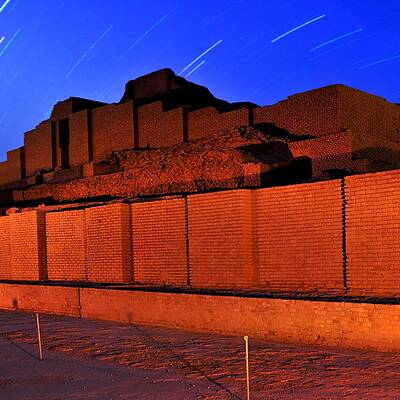Susa is considered as one of the oldest human habitats of the world. It is internationally known by monuments such as Chogha Zanbil and Apadana Palace. The former is an ancient Elamite complex that includes a ziggurat and the latter is the audience hall of the Palace of Darius complex. Another historic attraction of Susa is the Hafttapeh site, a site in which there is also an entertaining museum with the same name. During the second excavations of Hafttapeh important artifacts were discovered in large numbers which highlighted the necessity of a museum close to this historic site that could also serve as a research center. Therefore, the construction of museum began in early 1970. It was to be built as a structure with only one story. The museum opened in 1973 after the construction was finished. However, it was closed in 1980 due to the beginning of Iran-Iraq War which lasted for seven years. But fortunately, some of the artifacts were moved to Tehran. After a series of repairs and reconstructions that continued for twenty years, it was reopened in 2001 as a museum and exhibition of research documents of Hafttapeh and Chogha Zanbil.
The building is devised with exhibit rooms, library, laboratory, informatics office, pottery painting rooms, storages, restoration gallery and photography laboratory. In terms of number of found reliefs, the archeological excavations of Hafttapeh are one of the unmatched projects that have been conducted in this field. These excavations have successfully discovered multiple large reliefs including thousands of clay cylinders with cuneiform inscriptions in Akkadian language. Only the artifacts found in Hafttapeh are exhibited in this museum. They include objects as diverse as clays reliefs, and some stone reliefs in cuneiform in Akkadian alphabets, stone and clay seals, potteries, flat-bottomed urns, footed cups, pots, decorative objects such as necklaces made of gemstones like Agate and Onyx, decorative bone buttons in round and rectangular forms, depicted plates made from bronze or natural tar, tiles with geometric motifs, clay busts of Elamite men and women, tools such as chisel, mallet, hammer, and small clay figures. The museum is open to visiting from 8:30 a.m. to 4 p.m., all days except for weekends.

.jpg)
.jpg)
.jpg)
